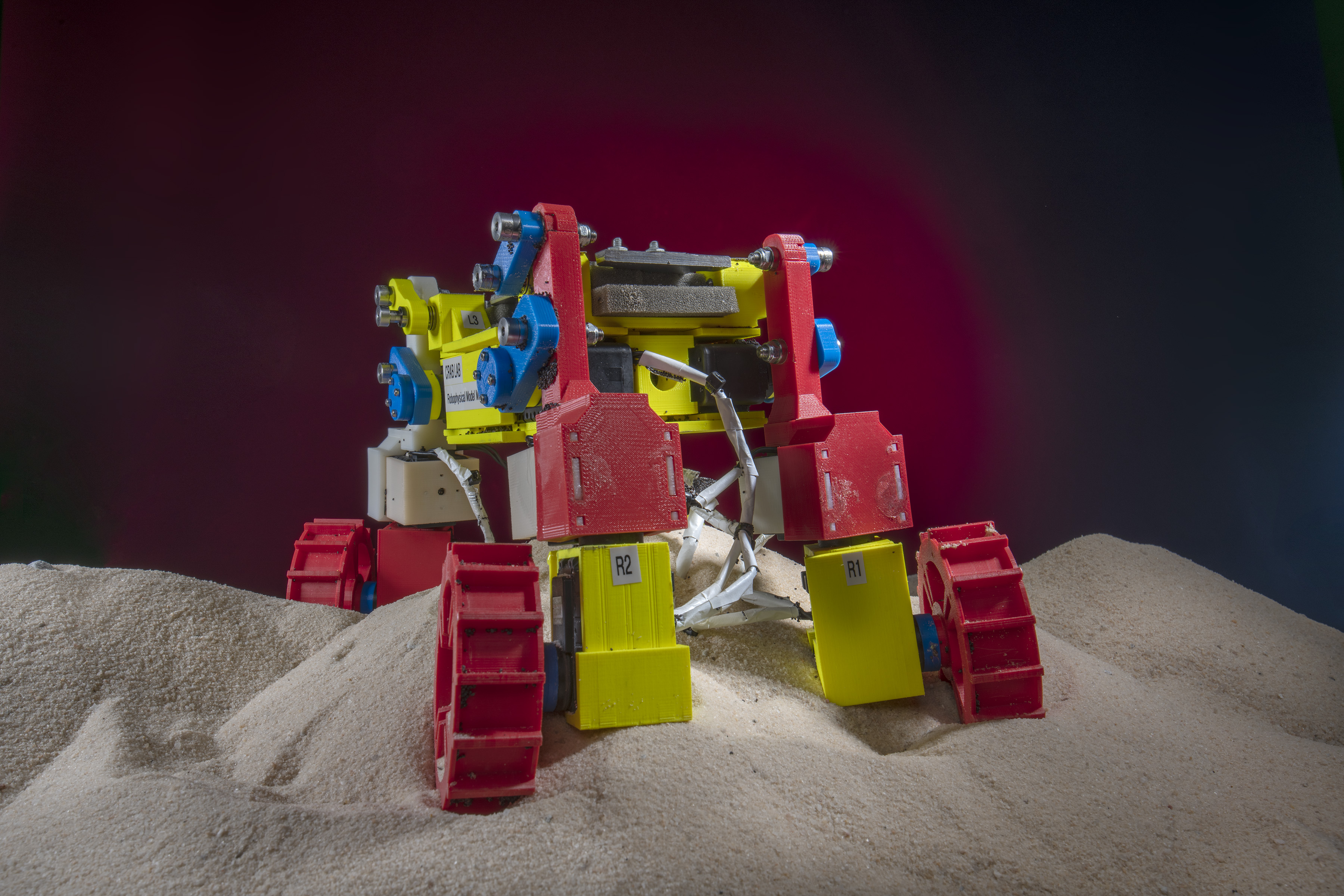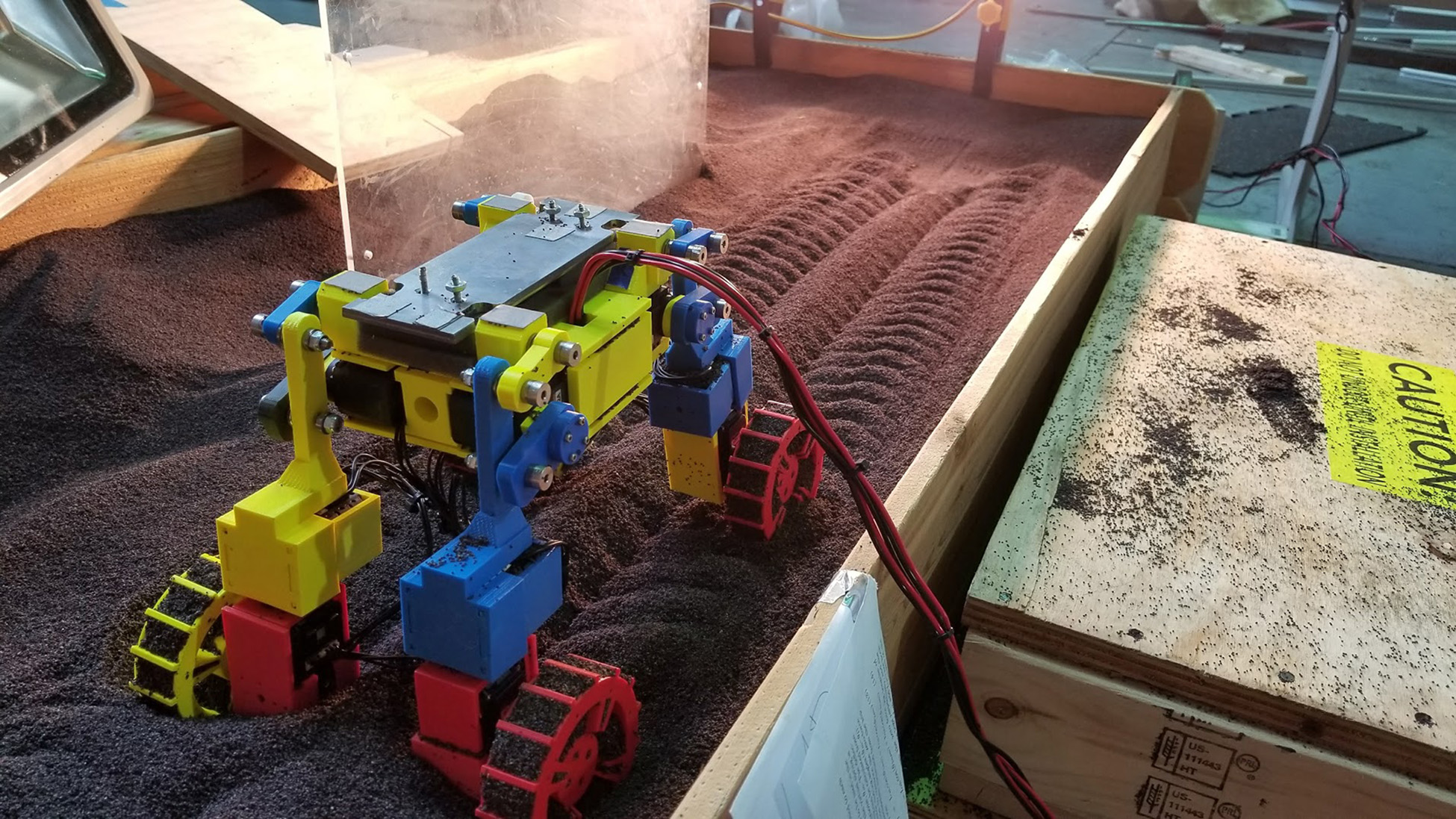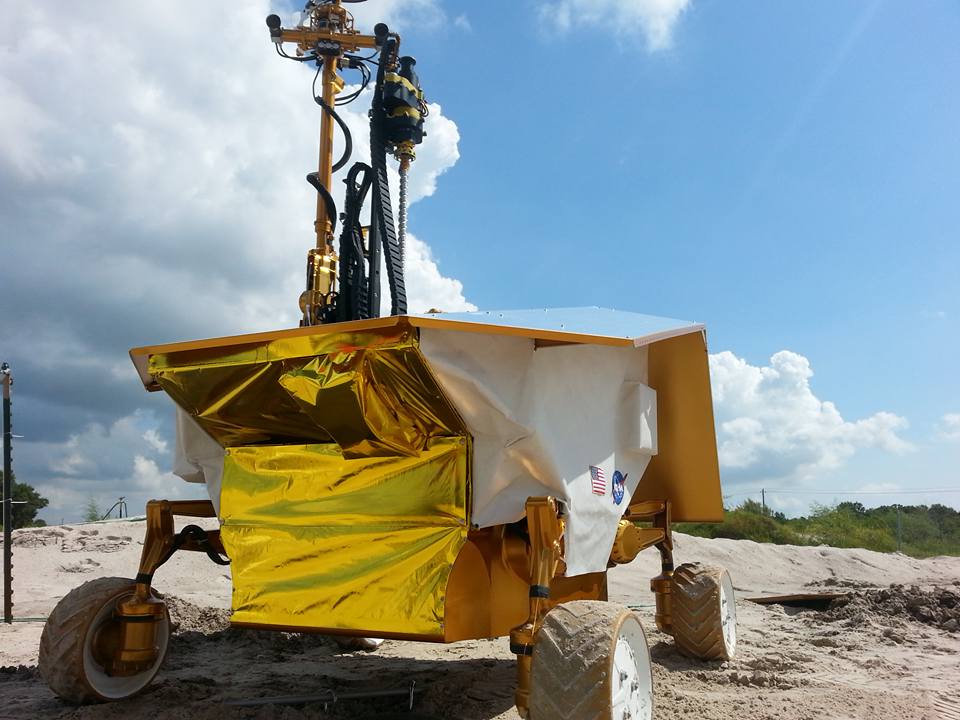Future Mars and moon rovers may paddle their way out of sand traps
Sand traps may not pose much of a threat to future Mars rovers.
One such obstacle ended the long and accomplished mission of NASA's Spirit Mars rover, which got stuck in 2009 and ended up freezing to death on the Red Planet. Spirit's wheels could only spin, leaving it stranded, but that limitation doesn't necessarily have to apply to future robotic explorers.
In 2015, for example, engineers at NASA's Johnson Space Center (JSC) in Houston built a prototype rover for the agency's Resource Prospector lunar-exploration project. This 660-lb. (300 kilograms) robot, called Resource Prospector 15 (RP15), could lift and sweep its four wheels, allowing it to crawl when rolling alone would not suffice.
Related: Occupy Mars: History of robotic Red Planet missions (infographic)
The Resource Prospector project was cancelled in 2018. But a team of researchers from JSC and the Georgia Institute of Technology (Georgia Tech) recently took a new look at the RP15 and its novel locomotory strategies.
Using 3D printers and commercially available components, the engineers — led by Georgia Tech mechanical engineering undergraduate Siddharth Shrivastava — built a miniature version of RP15 that uses 12 different motors to drive its four wheels. Like its bigger counterpart, this mini rover was designed to be capable of crawling or paddling its way out of sand traps and other sticky situations.
"By creating a small robot with capabilities similar to the RP15 rover, we could test the principles of locomoting with various gaits in a controlled laboratory environment," team member Andras Karsai, a physics doctoral student at Georgia Tech, said in a statement.
Breaking space news, the latest updates on rocket launches, skywatching events and more!
"In our tests, we primarily varied the gait, the locomotion medium and the slope the robot had to climb," Karsai said. "We quickly iterated over many gait strategies and terrain conditions to examine the phenomena that emerged."
The results of those tests were quite encouraging, the researchers report in a new study that was published online today (May 13) in the journal Science Advances.
For example, the mini rover was able to climb a steep slope composed of poppy seeds, a stand-in for sand. The robot's front wheels pushed poppy seeds backward, easing the slope the vehicle had to tackle. The back wheels then found purchase by wiggling from side to side, lifting and spinning, in a complicated motion that the researchers compared to paddling in water.
The team also took the RP15 out for a spin at JSC, driving the prototype through a flat, moist bed of sand. The prototype only had three fully functioning appendages, and test-bed constraints at the facility prohibited the RP15 from tackling a slope of its own. But the results of these trials at JSC validated what the researchers saw with the mini rover at Georgia Tech, team members said.
"This combination of lifting and wheeling and paddling, if used properly, provides the ability to maintain some forward progress even if it is slow," study co-author Dan Goldman, a physics professor at Georgia Tech, said in the same statement. "Through our laboratory experiments, we have shown principles that could lead to improved robustness in planetary exploration — and even in challenging surfaces on our own planet."
The researchers hope to further develop this locomotory strategy with larger robots going forward. If such future work goes well, it may not be too long before we start seeing crawling-rolling rovers on the moon and Mars — and here on Earth as well, as Goldman noted.
"Basic research is revealing counterintuitive principles and novel approaches for locomotion and granular intrusion in complex and yielding terrain," said Samuel Stanton, program manager for the Army Research Office, which is part of the U.S. Army Combat Capabilities Development Command's Army Research Laboratory. (The Army Research Lab helped support the new research.)
"This may lead to novel, terrain-aware platforms capable of intelligently transitioning between wheeled and legged modes of movement to maintain high operational tempo," Stanton said in the same statement.
- Spiders on the moon: 'Walking' robots will explore lunar crevices and caves
- Incredible technology: Spiderlike robots could build giant space structures
- NASA wants robots to sniff out moon pits for astronaut homes
Mike Wall is the author of "Out There" (Grand Central Publishing, 2018; illustrated by Karl Tate), a book about the search for alien life. Follow him on Twitter @michaeldwall. Follow us on Twitter @Spacedotcom or Facebook.
OFFER: Save 45% on 'All About Space' 'How it Works' and 'All About History'!
For a limited time, you can take out a digital subscription to any of our best-selling science magazines for just $2.38 per month, or 45% off the standard price for the first three months.

Michael Wall is a Senior Space Writer with Space.com and joined the team in 2010. He primarily covers exoplanets, spaceflight and military space, but has been known to dabble in the space art beat. His book about the search for alien life, "Out There," was published on Nov. 13, 2018. Before becoming a science writer, Michael worked as a herpetologist and wildlife biologist. He has a Ph.D. in evolutionary biology from the University of Sydney, Australia, a bachelor's degree from the University of Arizona, and a graduate certificate in science writing from the University of California, Santa Cruz. To find out what his latest project is, you can follow Michael on Twitter.




